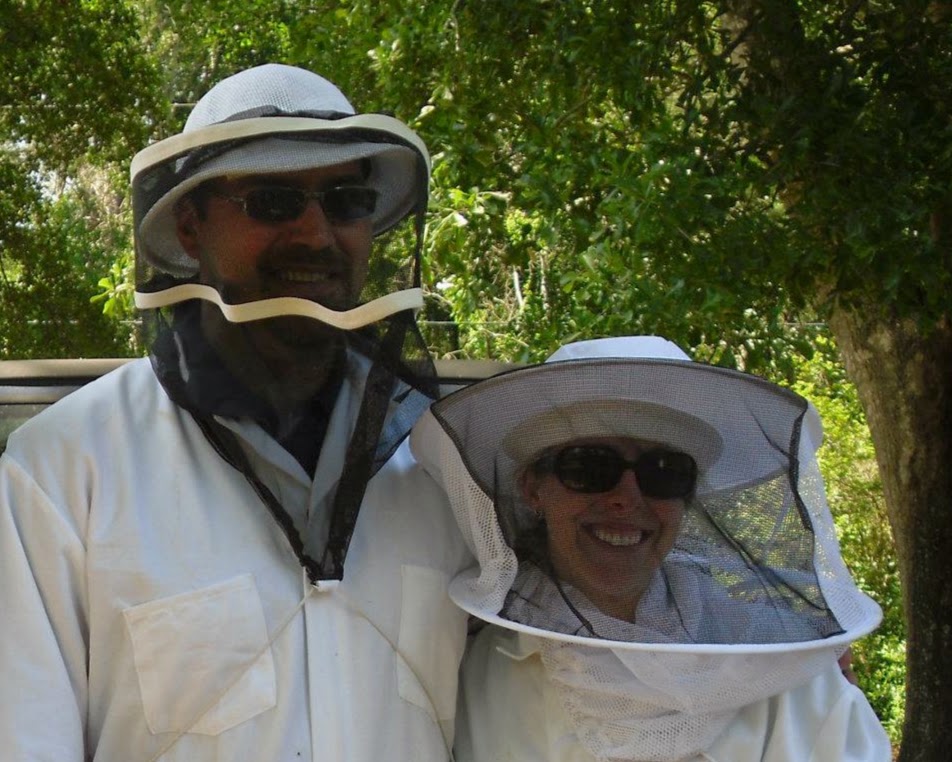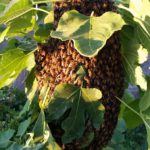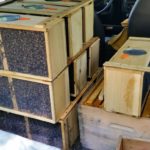
If you want to become a beekeeper in 2018, you should know where you’re sourcing bees.
As we get closer to the beginning of our beekeeping season this spring, we’ll publish some posts to cover the tasks you’ll need to accomplish and cover options for each task. Right now, you need to begin sourcing bees. Let’s talk through the 4 main sources for bees and discuss the pros and cons for each source.
Feeling lucky? Maybe you can catch a swarm.

Beginning with the least expensive choice when sourcing bees, catch a swarm for a free source of healthy bees. After surviving winter, the mature queen in a thriving colony leaves the hive along with a swarm of half the workers to find a new home. Swarms leave the hive when the bees realize nectar is plentiful and the queen needs more room for laying eggs.
Pros
Cost: Free.
Health: Diseased or weak bee colonies usually don’t swarm, so if you catch a swarm, they’re usually healthy.
Ease: You can easily shake a swarm into a box, once you get used to dealing with that many bees.
Heat: A swarm in a new box usually can’t generate enough heat to cause problems. Ensure they get some fresh air through screen or small holes in the box to prevent suffocation.
Cons
Stability: Swarms don’t always stay where you put them. They may want a better home and leave your box.
Growth: Swarms don’t come with any comb, so the workers must immediately begin drawing comb to build their nest. Since an adult bee emerges from it’s cocoon 21 days after the egg is laid, you won’t get any new adult bees, or growth in your colony for at least 3 weeks.
Honey: You probably won’t get any honey from a 1st year swarm, since they’ll spend considerable resources building comb.
How about removing bees from a structure?

You can also cut a colony from a wall or a cable box for another free source of bees. A removed colony brings comb and brood to your hive, but those can also cause problems unless removed correctly.
Pros
Cost: Like swarms, cutouts won’t cost you a thing. In fact, someone might pay you to remove a colony of bees from their property, but this option should only be used if you’re a seasoned beekeeper and know how to reliably remove a colony.
Growth: If handled properly, you can move brood combs to your hive and allow the colony to continue to develop bees with no gap in egg laying.
Honey: Some cutouts produce honey in their first year. Some cutouts provide honey immediately, if they have been in that location for a honey season.
Heat: Cutouts generally will not overheat unless you completely seal them with no ventilation.
Cons
Health: You don’t know anything about the health of a cutout hive until you begin moving combs. Often you will move pests and diseases from the old location to your hive.
Ease: Cutouts vary in difficulty based on their age. Most cutouts require you to spend hours in a protective suit and special equipment to vacuum the bees from the cavity.
Stability: Cutouts don’t always want to live in their new hive. Additionally, transferred combs become targets for pests.
Packages: Risky, but cheap.

Commercial beekeepers make packages by shaking 3 pounds of bees into a box and adding a queen. The queen, protected in a cage, is usually not the mother of the bees, which may have been shaken from multiple hives. Beekeepers have been sourcing bees from packages for years, because of the low cost and ease of shipping. We started our first colonies using packages, but now use nucs because of the risks and problems caused by package bees.
Pros
Cost: Packages are cheap, because you get what you pay for: 3 lbs. of worker bees and a queen. You don’t get any developing bees or any comb, just bees.
Ease: Starting a hive with a package is almost as easy as starting with a swarm. After you shake the bees into your hive, you secure the queen cage in the hive and check back in a few days to see that she’s been released.
Cons
Health: You really can’t determine the health of your new bees or the queen until they begin to build comb and raise brood. Since commercial beekeepers produce packages by shaking bees from multiple colonies, you have a higher chance of getting diseased bees. Packages also transmit pests that travel with the bees.
Stability: Packages of bees don’t always accept their queen. Packages of bees don’t always stay in your hive. You can use several strategies to increase your odds of success, but packages will abscond (leave the hive) more often than other sources of bees.
Growth: Like swarms, packages must build comb before the queen can begin laying new eggs. You won’t get any new bees for at least 21 days.
Honey: Since the bees in your new package need comb, they use most of their energy and stores to produce wax, not excess honey. Don’t expect a honey crop from a package until year 2.
Heat: Although package walls are typically screened, they still overheat if left in the sun or not allowed to ventilate properly. Keep them cool and shaded until you have a chance to install them.
We recommend nucs to start your first hives.

Starting your hives from nucs gives you some true advantages and a better chance at a first-year honey crop. A nuc is a small hive, composed of 5 frames with developing bees, honey, and pollen, worker bees, and a queen that’s the mother of all the workers in the hive. When you start your hive with a nuc, you’re simply relocating the colony with it’s nest intact and letting it continue to grow.
Pros
Cost: Nucs cost more than packages, but in addition to the bees and queen, you get 5 drawn frames, brood, and stores. When you factor in the additional pros we’ll list, the added cost for a nuc is money well-spent.
Ease: To start a hive from a nuc, you simply move the frames and bees from the nuc box to your hive.
Health: Beekeepers can gauge the health of a nuc by inspecting the nuc for healthy brood and the presence of the queen and/or eggs.
Stability: Bees generally won’t abandon their brood nest, so the frames of brood in a nuc “lock” in the colony and give you insurance against absconding.
Growth: Nucs begin with a head-start of 5 frames of drawn comb and developing bees in the brood nest. New adult bees will emerge from their cocoons on the day that you install them into your hive, allowing your colony to increase in size immediately.
Honey: Since your give grows quickly, you have an opportunity to harvest some honey from a first year hive.
Cons
Heat: Since nucs must remain closed in transit, make every effort to keep them cool until you have a chance to open them or install them in their permanent home.
For us, the decision is easy when sourcing bees.
I hope this comparison helps you when making decisions for sourcing bees. We think beginning beekeepers have a better chance of success if they start their first hives from nucs. If you haven’t ordered your nucs for Spring 2018, order them soon before we’re sold out. Check back here soon, where I’ll discuss the pros and cons of hive types.
If you’re an experienced beekeeper, what is your preference when sourcing bees?
Matt
You’ve convinced me and I want to order a”nuc”. My only question is what variety of bees do you provide and recommend for Magnolia area
Charley, our nucs are Italian bees, which build up quickly and may produce some honey in their first year, depending on the weather we get this year.
Thanks for the info